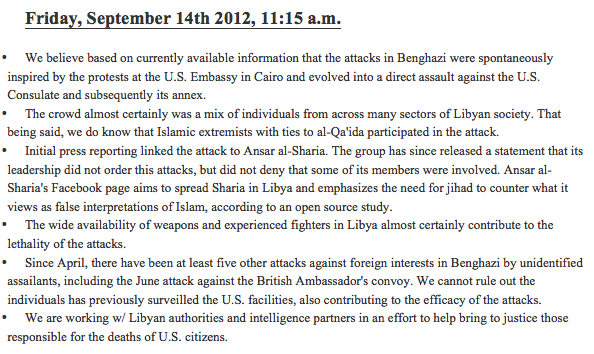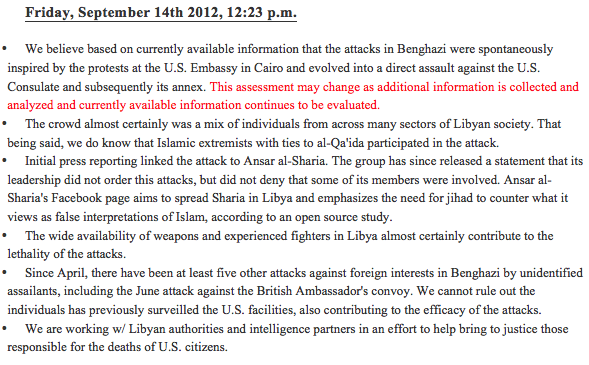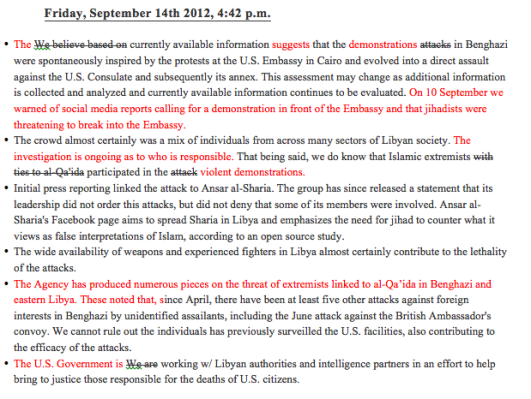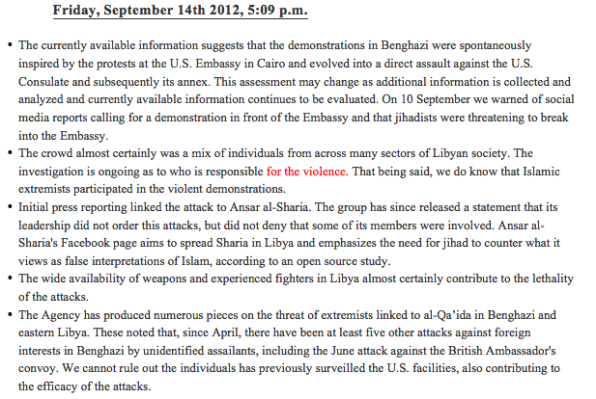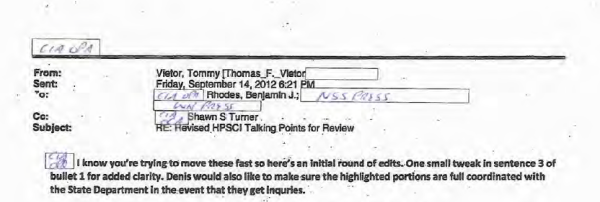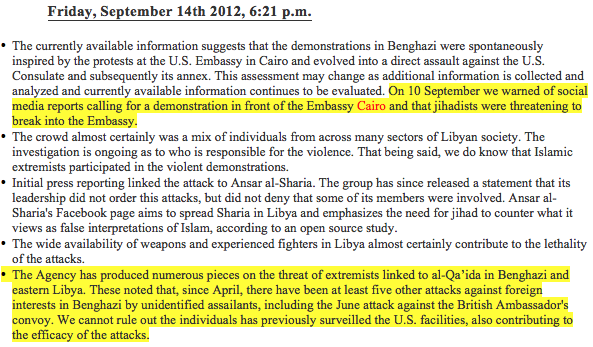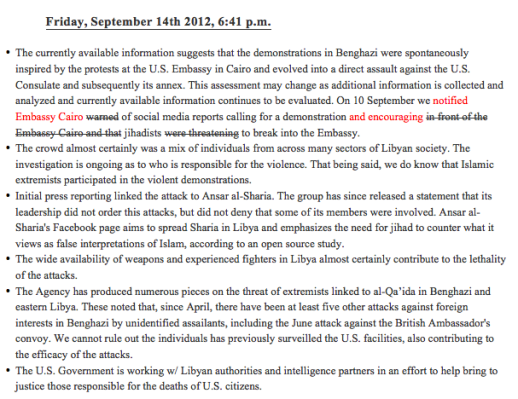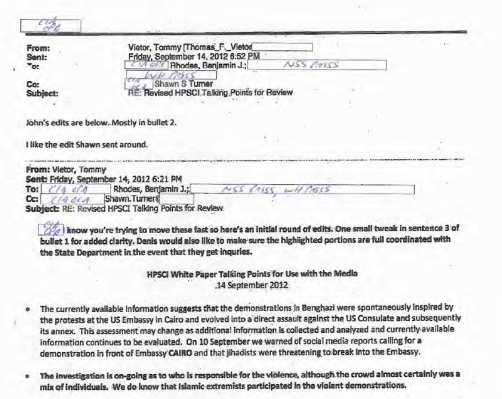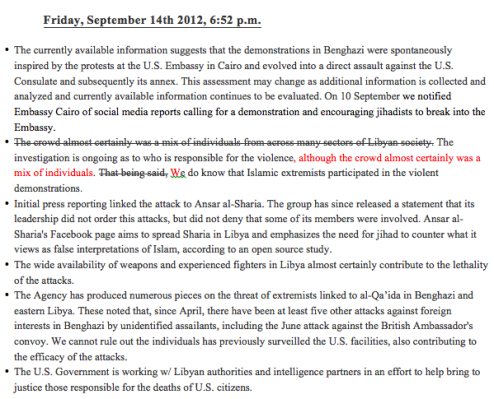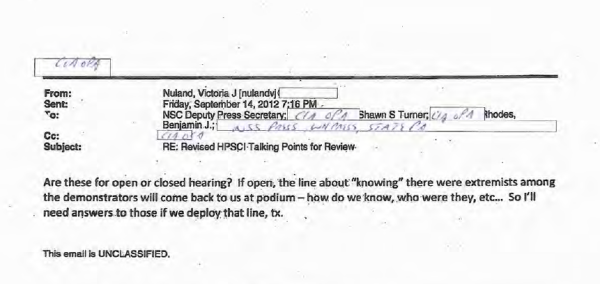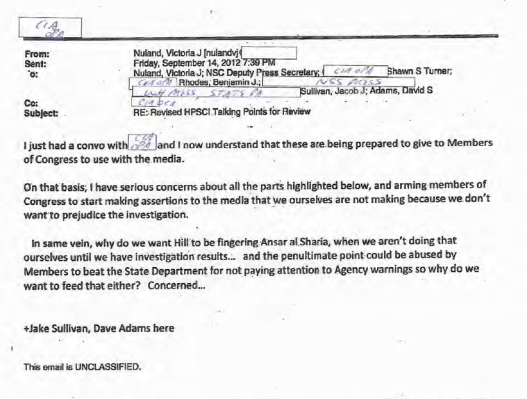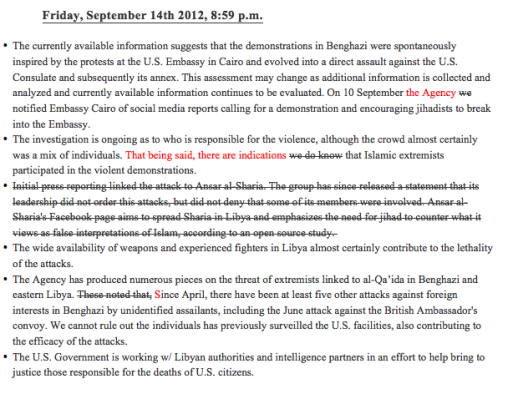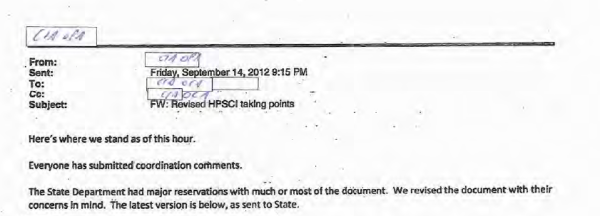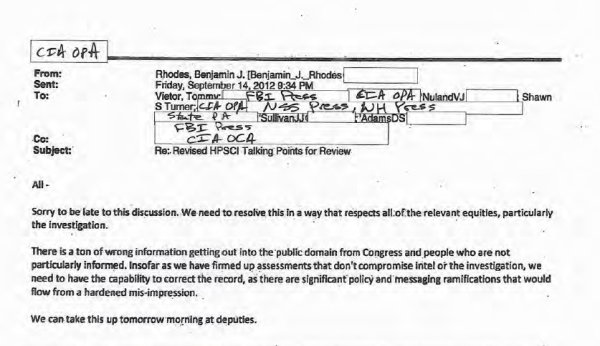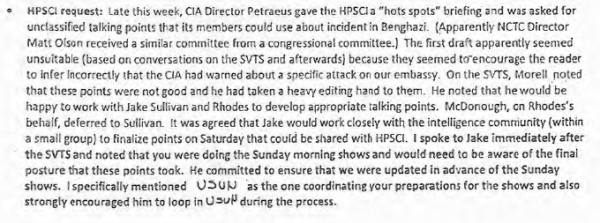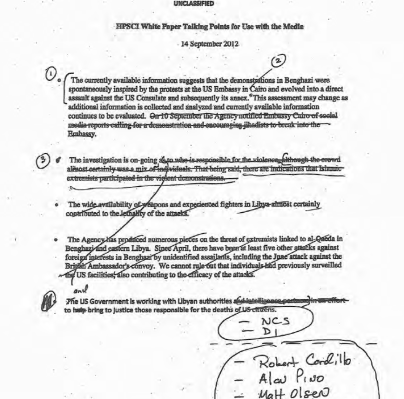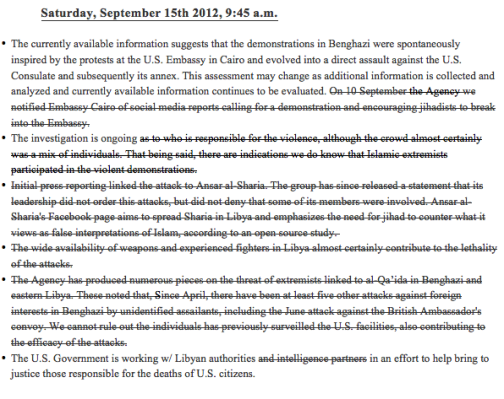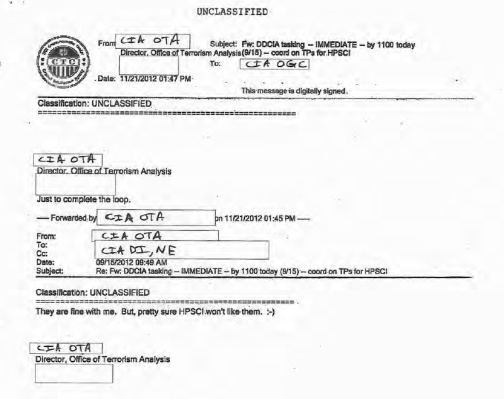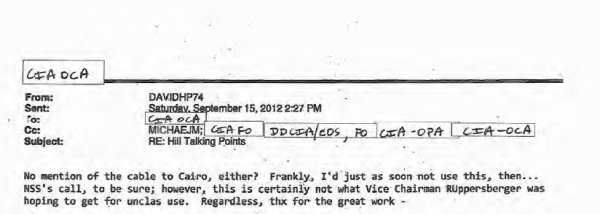White House press secretary Jay Carney answers questions during a press briefing at the White House on May 10, 2013
Eight months after the U.S. diplomatic post in Benghazi was attacked, leaving four Americans dead including Ambassador to Libya Chris Stevens, new internal documents have provided a fuller sense of how the Obama Administration approached the aftermath.
The e-mails confirm White House statements that they did not substantively edit the talking points over the description of the attack in Benghazi or potential perpetrators. However, press secretary Jay Carney’s assertion that the Administration made just a single semantic edit to the talking points appears to have been false. According to senior Administration officials, Carney had not reviewed the full e-mail chain when he said in November that “the single adjustment that was made to those talking points by either of those two institutions were changing the word consulate to diplomatic facility because consulate was inaccurate.” In fact, White House officials had a longer back-and-forth with the intelligence community, and the State Department objected to a substantial portion of the talking points that CIA Deputy Director Michael Morell ultimately cut.
The following timeline has been compiled from the 100 pages of e-mails released to the press by the White House on Wednesday.
Friday, Sept. 14, 2012, 11:15 a.m.
After members of the House Permanent Select Committee on Intelligence (HPSCI) ask for unclassified talking points on what happened in the Benghazi attack, the director of the CIA’s Office of Terrorism Analysis writes an initial draft for the CIA. The White House is first notified at 11:17 a.m., but is not yet presented with the draft.
Sept. 14, 12:23 p.m.
The CIA’s Office of General Counsel recommends an edit to the first bullet point, so as not to impede any future criminal prosecution.
Sept. 14, 3:04 p.m.
These talking points are sent to then White House national-security spokesman Tommy Vietor, deputy national-security adviser for strategic communication Ben Rhodes, and other Administration officials.
Sept. 14, 3:27 p.m.
A CIA official e-mails, “We still have a number of components coordinating here on these points and we will have further edits. We are multi-tasking due to the time constraints.” The official promises another version of the talking points around 4 p.m.
Sept. 14, 4:42 p.m.
CIA officials circulate a revised copy of the talking points for review before sending to the White House. This draft cuts an explicit mention of “ties to al Qa’ida” in the second bullet point due to concerns from the general counsel about potential criminal prosecution. The draft also adds language about CIA warnings to the U.S. embassy in Cairo and the State Department about threats to diplomatic facilities, including from extremist groups tied to al-Qaeda.
Sept. 14, 5:09 p.m.
A slight change is made to the CIA internal draft before being sent to the White House at 5:09 p.m. and to the FBI at 5:20 p.m.
Sept. 14, 6:21 p.m.
Vietor e-mails the CIA with the White House’s first edit — adding Cairo to the first bullet point for clarity. He adds, “[Deputy National Security Adviser] Denis [McDonough] would also like to make sure the highlighted portions are fully coordinated with the State Department in the event that they get inquiries.”
Sept. 14, 6:41 p.m.
Shawn Turner, director of public affairs for the Office of the Director of National Intelligence, e-mails the CIA and the White House to swap the word warned with notified in the first bullet point and rewrites it.
“I’ve been very careful not to say we issued a warning,” he writes.
At 6:43 p.m. a CIA official writes, “I think that’s a good adjustment” and loops in the State Department for the first time.
Sept. 14, 6:52 p.m.
Vietor e-mails edits from John Brennan, then assistant to the President for homeland security and counterterrorism, to the CIA. The edits deal with the language used in the second bullet point.
Sept. 14, 7:16 p.m.
State Department spokeswoman Victoria Nuland e-mails for the first time to ask for information about “knowing” that the perpetrators were extremists. She asks for answers to the expected follow-up questions of “how do we know, who were they, etc.,” so as to be prepared when asked by the media.
At 7:29 p.m. a CIA official e-mails Nuland’s question around internally, asking “Can we soften this a bit?”
Sept. 14, 7:39 p.m.
Nuland e-mails again, this time raising concerns about giving the media and Congress information that the State Department isn’t making public because they don’t want to prejudice the investigation, including a reference to the extremist group Ansar al-Sharia.
Additionally, Nuland objects to the second-to-last bullet point because it would “feed” congressional criticism of the department by potentially creating the impression that it did not heed CIA warnings.
Sept. 14, 8:58 p.m.
The CIA circulates a revised draft of the talking points that addresses FBI and State Department concerns. The major change is a removal of references to Ansar al-Sharia so as not to prejudice the investigation. It also softens language about the involvement of Islamic extremists in the demonstrations.
These are circulated at the CIA at 9:15 p.m., with one official writing: “The State Department had major reservations with much or most of the document. We revised the document with their concerns in mind.”
Sept. 14, 9:24 p.m.
Nuland e-mails in response to the latest draft of CIA talking points, saying they are still unacceptable to State Department leadership, and notes that the department is consulting with White House national-security staff.
At 9:34, Rhodes e-mails all parties and says: “We need to resolve this in a way that respects all of the relevant equities, particularly the investigation.” The matter, he adds, will be discussed the next morning at a deputies meeting.
Saturday, Sept. 15
On Saturday morning, White House officials convene the “deputies meeting.” Officials discuss the talking points, according to an e-mail sent by a staffer working for the U.S. Mission to the U.N. at 1:23 p.m.
The author of the e-mail, whose name has been redacted, writes that the initial draft of the talking points was unsuitable “because they seemed to encourage the reader to infer incorrectly that the CIA had warned about a specific attack on our embassy.” The author writes that Morell, deputy director of the CIA, “noted that these points were not good and he had taken a heavy editing hand to them.” The e-mail continues: “[Morell] noted that he would be happy to work with [State Department Deputy Chief of Staff] Jake Sullivan and Rhodes to develop appropriate talking points.”
According to senior Administration officials, the unnamed U.S. Mission to the U.N. staffer is incorrect. According to these officials, there was only a short discussion of the talking points at the end of the meeting and that Morell made the changes unilaterally and in his own hand. The officials say Morell did not act at the behest of the State Department; rather, he believed all along that information about the warnings should not have been included in the talking points because it made the department look bad and did not explain their response.
Sept. 15, 9:45 a.m.
Morell’s changes are e-mailed internally at CIA for sign-off. Morell crosses out the line, “There are indications that Islamic extremists participated in the violent demonstrations,” but according to senior administration officials that was inadvertent.
The latest version of the talking points:
Sept. 15, 9:49 a.m.
The author of the first draft of the talking points e-mailed CIA officials saying, “They are fine with me but pretty sure HPSCI won’t like them :-)”
Sept. 15, 11:08 a.m.
Morell e-mails his edited talking points to all the stakeholders, adding in the line about “Islamic extremists.”
Sept. 15, 11:25 a.m.
Rhodes e-mails a single edit for accuracy, to cut the term consulate and replace it with diplomatic post. Moments later the State Department makes the same suggestion and fixes a typo. These become the final talking points, which are distributed to lawmakers and used by Susan Rice on the Sunday shows the following morning.
Sept. 15, 12:21 p.m.
The final talking points are sent to David Petraeus for review.
Sept. 15, 2:27 p.m.
Petraeus replies to CIA officials, complaining that references to the cable to the Cairo embassy were cut. “I’d just as soon not use this, then,” he wrote. “NSS’s call, to be sure; however this is certainly not what Vice Chairman Ruppersberger was hoping to get for unclas use.” Senior Administration officials say Petraeus, unlike Morell, wanted the warnings to be included in the talking points.
Sept. 15, 2:44 p.m.
The talking points are sent to Rice’s office. Twenty-five minutes later, they are sent to lawmakers on Capitol Hill.


